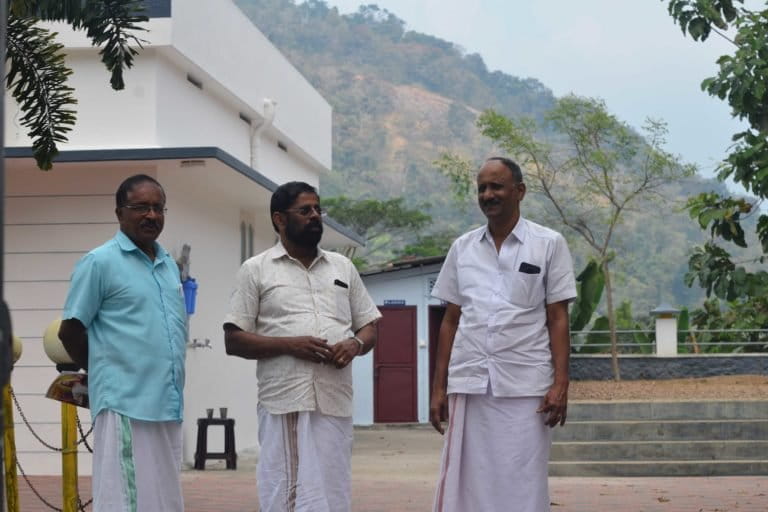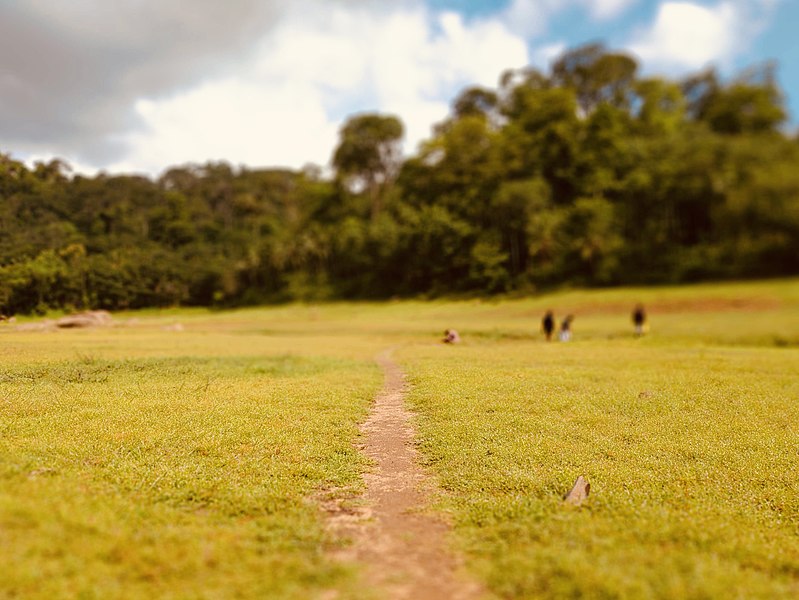- In June 2022, the Supreme Court of India mandated that every national park and wildlife sanctuary in the country should have a one-kilometre eco-sensitive zone (ESZ).
- Farmers around protected areas in Kerala are concerned the rules of ESZs will prevent them from diversifying agriculture and development of social infrastructure like schools.
- The state government prepared multiple maps just days before going to the Supreme Court and this has caused confusion among villages close to protected areas.
“It is like slow poisoning. We know that we will not be ousted today or tomorrow. But it will happen. The judiciary and authorities will drag the case for some 20 more years. And when our survival becomes an unresolvable question, we will be forced to climb down the hill,” said 59-year-old Tony Joseph, a former school principal and resident of Amboori, a village in the Western Ghats, in Kerala.
Following a Supreme Court order on June 3, 2022, which has mandated a one-kilometre buffer zone around national parks and wildlife sanctuaries, the Kerala government began preparing maps of this buffer zone around its protected areas.
The state government prepared multiple maps just days before going to the Supreme Court. The two maps, one conducted by aerial survey and one by physical survey, reflected different things – certain lands and properties were part of the eco-sensitive buffer zone in one, while not in the other. This caused confusion among villages close to protected areas.
The 15,000-20,000 residents of Amboori, bordering Neyyar Wildlife Sanctuary, are unclear about which map has the government submitted to the court and worry that they will be at the losing end if their village is declared part of the buffer zone.
Meanwhile, the Kerala Independent Farmer Association (KIFA), which coordinates and leads the legal fight of farmers and settlers in the Supreme Court on the ESZ issue, prepared their own map based on physical surveys.
Rules of eco-sensitive zones
The eco-sensitive or buffer zones are meant to act as “shock absorbers” to protected areas by regulating and managing the activities around them.
According to the 2011 ESZ guidelines, some activities are prohibited, regulated, or promoted in ecologically sensitive zones. Activities, including commercial mining, setting of sawmills and industries causing pollution, commercial use of firewood, and major hydro-power projects, are prohibited. Tourism activities like flying over protected areas (PAs) in an aircraft or hot air balloon and the discharge of solid waste in natural water bodies or terrestrial areas are also prohibited.
Regulated activities include felling of trees, drastic change in agriculture systems, and commercial use of natural water resources, including groundwater harvesting and setting up of hotels and resorts.
The activities permitted are ongoing agriculture, rainwater harvesting, organic farming, and renewable energy sources use.

“My rubber plantation and house are located in the buffer zone. According to the rules, cutting rubber trees, planting other crops, and digging a well will be regulated,” Joseph said. He added that the buffer zone could affect the social needs of villagers too. “The St Tony Higher Secondary School in Amboori town also falls in the buffer zone range. There are around 1,200 children in the school. We had plans to build new toilets, labs, classrooms, and a new playground. But now, we do not know if it will happen,” Joseph said. Permanent constructions are restricted in the ESZ.
He fears that they may have to leave the village if their livelihoods are impacted. The government hasn’t talked about any relocation and rehabilitation plans.
A long history
Joseph’s grandfather came to Amboori in the 1930s from Central Travancore when the Travancore Royals promoted rice farming in new areas to overcome the food crisis. The then government had given them land near forests or in ecologically sensitive areas.
According to Wildlife Conservation Strategy 2002, land falling within 10 km of the boundaries of national parks and sanctuaries should be notified as eco-fragile zones under section 3(v) of the Environment (Protection) Act and Rule 5 Sub-rule 5(viii) & (x) of the Environment (Protection) Rules.
However, when many states opposed the 10 km buffer zone for protected areas, the Supreme Court verdict gave a leeway to maintain a one kilometre buffer zone, adhering to the 2011 ESZ guidelines.
The Kerala Independent Farmer Association (KIFA), which is fighting against the ESZ buffer zone in the Supreme Court and on the ground in Kerala, says that some 3 million people in 111 panchayats in Kerala may be affected if proposed ESZ norms are implemented.
Talking to Mongabay-India, Thomas George, a resident of Mayam, a small area in Amboori, said that since the 2022 Supreme Court verdict, the land prices have come down drastically, and there are no buyers. “If the buffer zone is implemented, I will have to get approval from forest officials for anything I plan to do in my land,” he said.

The 2022 Supreme Court verdict says, “the Principal Chief Conservator of Forests (PCCF), as also the Home Secretary of each state and union territory, shall remain responsible for proper compliance with the 2011 ESZ Guidelines.” It also added that the PCCF for each State and Union Territory should make a list of subsisting structures and other relevant details within the respective ESZs and furnish a report before this court in three months.
Flawed judiciary
Commenting on the buffer zone issue, Faizi S., an ecologist, and UN multilateral environmental negotiator, said, “The Supreme Court has unilaterally taken this decision and has imposed the same on the Indian parliament rights. The 1972 Wildlife Act has defined what constitutes a Protected Area (PA) clearly. The ESZ idea was brought in by the Wild Life National Action Plan. Based on this, while hearing a case, the Supreme Court declared ESZs.”
He said that certain procedures such as having public hearings with adivasis and settlers determining the PAs were skipped by the authorities. Additionally, he said, satellite maps and physical maps created by the authorities are not matching.
On January 16, 2023, the Supreme Court directed the batch of pleas seeking a relaxation of the ESZ directive to be listed before a combination of three judges. A division bench comprising Justices BR Gavai and Vikram Nath was hearing the petitions filed by, inter alia, the governments of Kerala and Tamil Nadu, as well as an application moved by Advocate VK Biju, on behalf of residents lying within the ‘one-kilometre ESZ’.
After hearing the submissions made by the counsel, Justice Gavai directed the matter to be placed before the chief justice, saying, “It will be appropriate that all these modification applications are heard and decided by a bench having a strength of three judges.”
Meanwhile, Joseph and other residents worry that they will be forced to move to the towns in the plains. “Due to climate change and man-made disasters, fishermen are forced to move to plain areas from the coast. They know fishing but can they do it in towns. Can we farmers do farming in towns? Do the towns have the capacity to give space for us too. Should we become gig workers?” Joseph said.
Banner image: Near Amboori in Kerala. The Supreme Court’s directive to declare one-kilometre eco-sensitive zones around Protected Areas has caused concern among Kerala’s farmers living in the proposed zones. Photo by Jithu Antony/Wikimedia Commons.
